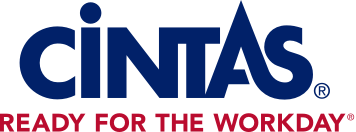Understanding Ohio House Bill 47: AED Requirements for Schools and Its Impact on Student Safety
Ohio House Bill 47, now signed into law, mandates the installation of Automated External Defibrillators (AEDs) in all schools across the state. This white paper explores the details of the bill, its importance, and its impact on schools, while providing guidance on compliance and funding options.
What is Ohio House Bill 47?
Ohio House Bill 47 requires every school in Ohio to have at least one AED on-site. The bill aims to ensure that schools are prepared to respond to cardiac emergencies promptly and effectively.
Why is it Important?
Sudden cardiac arrest (SCA) can happen to anyone, including students, staff, and visitors. AEDs are crucial in increasing the survival rate of SCA victims by providing timely and necessary intervention before emergency medical services arrive.
How Does it Impact Schools?
Schools must allocate budget and resources for the purchase, installation, and maintenance of AEDs. Additionally, staff must be trained to use the devices effectively, ensuring readiness in the event of a cardiac emergency.
The bill specifies that AEDs must be placed in various locations and under several conditions, including:
- Sports and recreation locations such as indoor recreation centers, gymnasiums, swimming pools, and playing fields.
- All schools operated by a school district board of education.
- Chartered or non-chartered nonpublic schools that follow the rules of an interscholastic conference or an organization that regulates interscholastic conferences or events.
- Athletic contests or competitions sponsored by or associated with schools, including cheerleading, club-sponsored sports activities, and sports activities sponsored by school-affiliated organizations.
- Non-competitive cheerleading sponsored by school-affiliated organizations.
- Practices, interschool practices, and scrimmages for all the activities described above.
- Recreational facilities under the control of townships, municipalities, and counties, with exceptions for townships and villages with a population under 5,000.
Timing for Compliance
Schools are required to comply with Ohio House Bill 47 by the start of the next academic year. This timeline ensures that schools have sufficient time to plan, purchase, and install AEDs, and to train staff appropriately.
What is an AED?
An Automated External Defibrillator (AED) is a portable device that delivers an electric shock to the heart, allowing it to re-establish an effective rhythm during sudden cardiac arrest. AEDs are designed to be user-friendly, with clear instructions to guide untrained bystanders. It takes a lot more than an AED to save a life. Proper planning, implementation, ongoing support and routine onsite service checks are critical in making sure the AED works when you need it most - contact Cintas to get started today.
How to Get Funding?
Funding for AEDs can be obtained through various means, including federal and state grants, private donations, and fundraising initiatives. Schools can also explore partnerships with local businesses and community organizations to secure financial support.
Training Requirements
Proper training is essential to ensure staff members can use AEDs effectively during emergencies. Training programs should include CPR certification and hands-on practice with AED devices. Regular refresher courses are recommended to maintain proficiency and confidence.
Hospital Provider Payment Relief
The bill also includes provisions for Hospital Provider Payment Relief, establishing an FY 2025 appropriation of nearly $5.5 million from the Coronavirus State Fiscal Recovery Fund for certain hospitals in Stark County. This funding is aimed at providing financial support to hospitals to help them comply with the new AED requirements.
How Cintas First Aid & Safety Can Help
Help ensure your school's emergency readiness and compliance with Ohio House Bill 47 with comprehensive solutions for high-quality AEDs and training programs that instill confidence. Cintas First Aid & Safety is dedicated to helping schools with every detail, not just providing AEDs but the ongoing maintenance and compliance needed to help keep your students and staff safe. Contact Cintas to ensure you are set up for success this school year.
